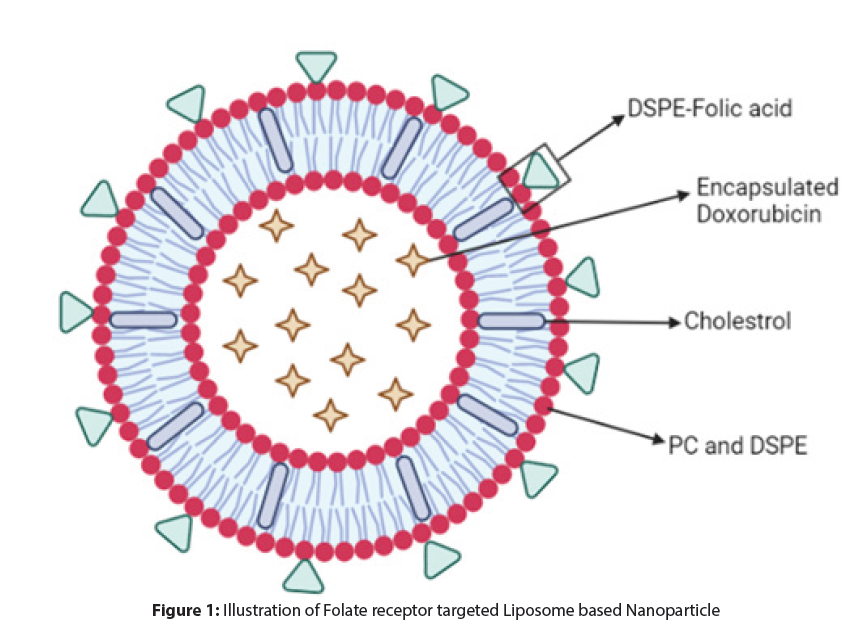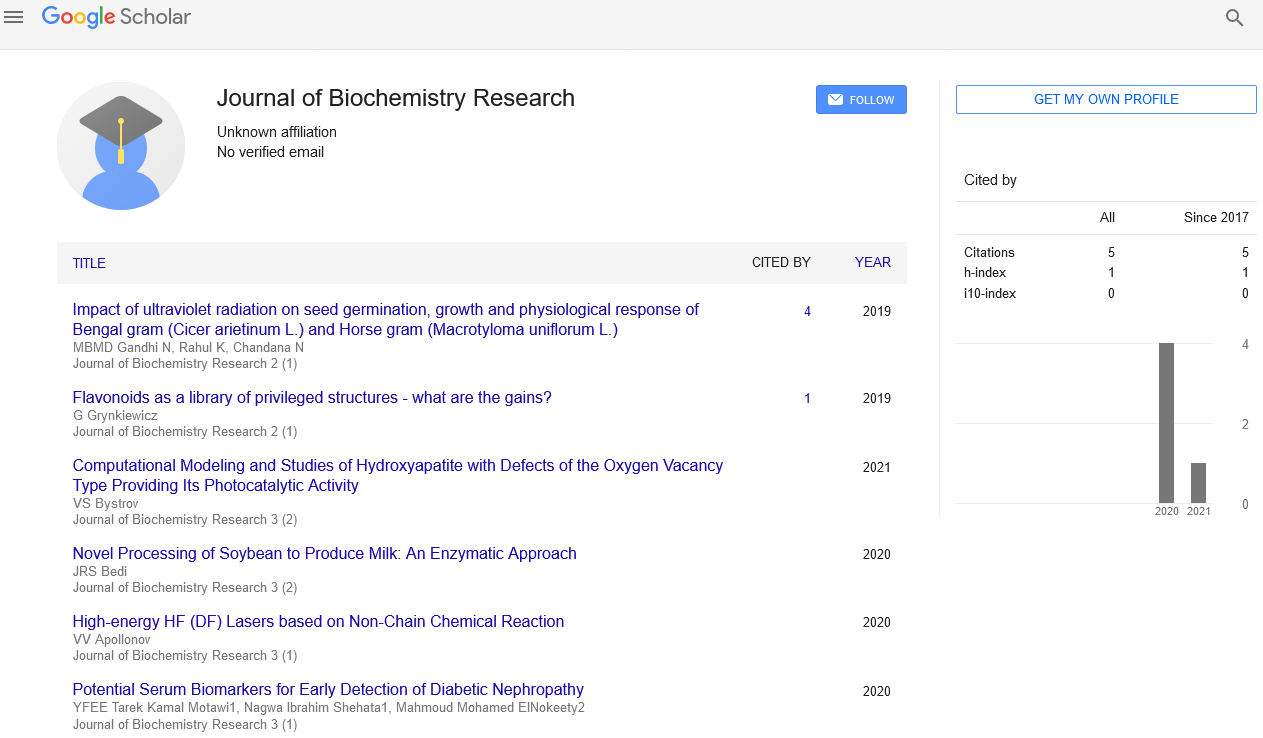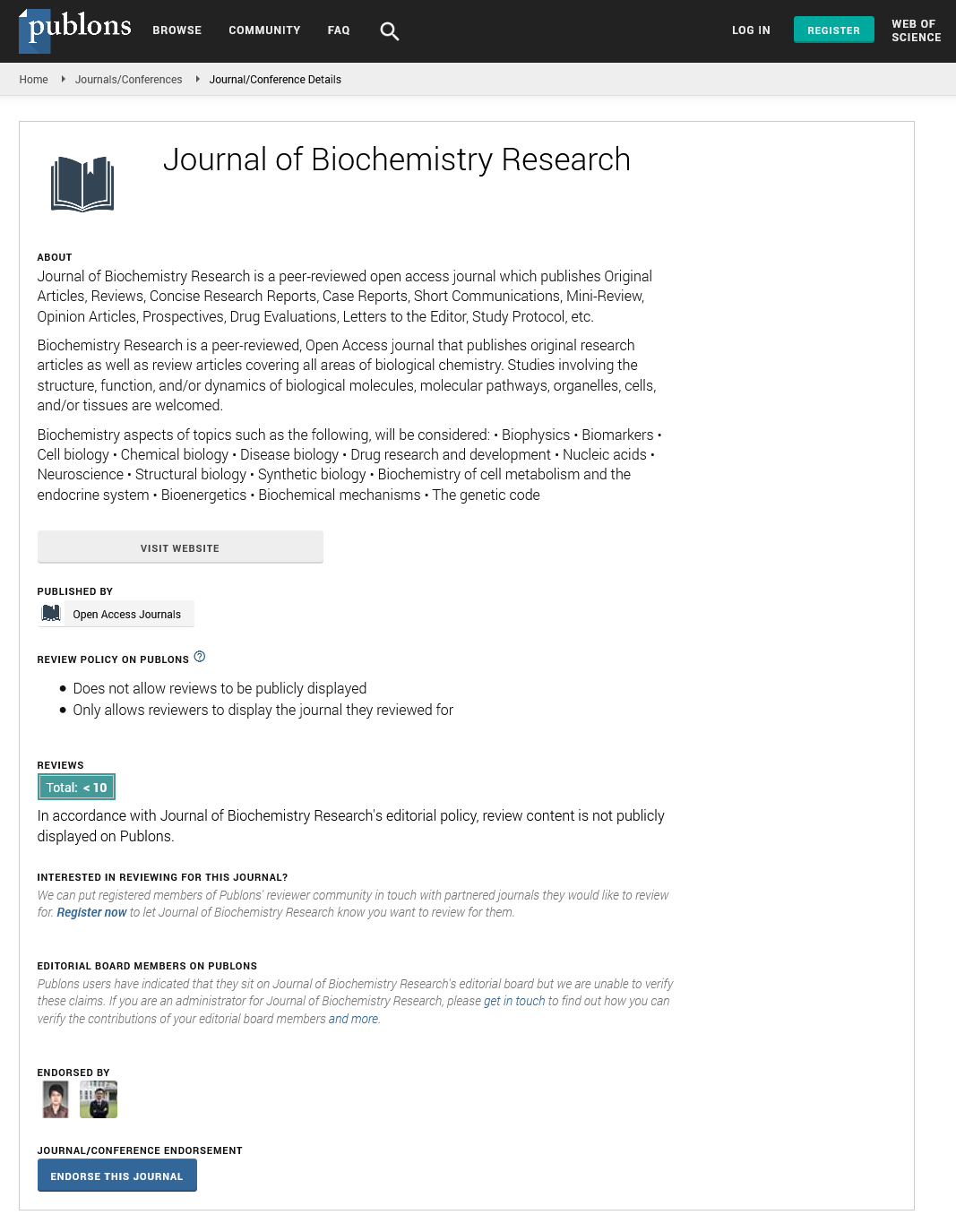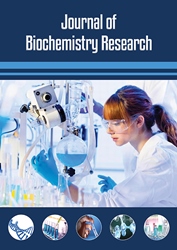Research Article - Journal of Biochemistry Research (2023) Volume 6, Issue 2
How Doxorubicin Based Liposomal Agents Would Effect on Breast Cancer Tumors: A Proposed Delivery Mechanism Toward Targeted Cancer Therapy.
Lara Sadi*,Özge Yılmaz Gel
Department of Biochemistry and HISAR School, Turkey
Department of Biochemistry and HISAR School, Turkey
E-mail: lara.sadi@hisarschool.k12.tr
Received: 24-Feb-2023, Manuscript No. oabr-23-90029; Editor assigned: 27-Feb-2022, PreQC No. oabr-23- 90029; Reviewed: 09-March-2023, QC No. oabr-23-90029; Revised: 13-March-2023, Manuscript No. oabr-23-90029 (R); Published: 20-March-2023; DOI: 10.37532/oabr.2023.6(2).16-19
Abstract
In recent years the application of liposomes to enable efficient drug delivery systems has an important role in biomedical areas. Application of liposome prevents systematic toxicity and helps effective delivery of encapsulated compounds to targeted sites of the human body. Liposomes are natural phospholipids which allow increased concentration of drugs to be delivered to the tumor cells. Encapsulation of the drug also prevents it from being broken down in the body before reaching the tumor site and does not encounter the healthy body tissues. Penetration of drugs to solid tumors is a critical problem. Therefore, solid tumors such as breast cancer tumors must be transported by drug delivery systems and targeted to cancer. In this study, Folic acid-targeted and modified Liposome-based drug delivery system was designed for the treatment of breast cancer, and its use in breast cancer will be discussed.
Keywords
Breast cancer • Doxorubicin • Drug delivery systems • Folic acid • Liposome
Introduction
Drug packaging, such as a micelle or a nanoparticle, protects the drug from degradation and lets it reach wherever it is needed in the body. These “containers” are referred to as drug delivery systems. In the last several decades, medication delivery has evolved significantly, and much more advancements are projected in the upcoming years [1].
The use of new and upcoming drug delivery technologies for conventional medicines and biotechnological products is discussed, and the physician’s responsibilities for ensuring proper uses are highlighted. The ability to deliver a drug more precisely to a particular site, easier, more accurate, frequent dosing, decreased variability in systemic drug concentrations, absorption that is more consistent with the site and mechanism of action, and decreases in toxic metabolites are all benefits of advanced drug delivery systems over traditional systems. Targeted drug delivery systems are beneficial since the patient will need to take fewer doses more frequently, the drug will have a more consistent impact, there will be fewer adverse effects, and there will be less fluctuation in the drug levels in the blood [2].
Liposomes are spherical unilamellar or multilamellar vesicles that mostly contain phospholipids from plant or animal sources.They spontaneously self-assembled closed vesicles with concentric lipid bilayers and hydrophilic centers when phospholipids were disseminated in an aqueous media. Liposomes are tiny, circular artificial vesicles that can be made from cholesterol and safe, natural phospholipids. The hydrophobic and hydrophilic properties of liposomes, in addition to their biomaterials, make them ideal drug delivery systems. With regard to lipid composition, surface charge, size, and production process, liposome properties differ. Additionally, the ‘rigidity’ or ‘fluidity’ and the charge of the bilayer are determined by the components used in the bilayer.
Cholesterol and one or more concentric curved lipid bilayers make up the closed, self-assembling liposomes. The lipids used to make liposomes are amphiphilic, making them ideal for medication delivery. The entropy of the system increases when the amphiphilic molecules interact with the aqueous environment, causing them to first dissolve and subsequently aggregate to a specific concentration [3].
Liposomes nanoemulsions which are widely used nanoparticles. They are recently used in nanomedicine applications mainly due to their biocompatibility, stability, ease to synthesize and high drug loading efficiency, and their safe excipients used in these formulations. Due to their size, hydrophobic and hydrophilic characteristics and their ability to encapsulate drug molecules either in the aqueous interior of the vesicles or in the lipophilic membrane, liposomes are considered promising to be used effectively as drug delivery systems [4].
Breast cancer is the most common cancer in women in the USA, except for skin cancers. It is about 30% (or 1 in 3) of all new female cancers each year [5].
Except for skin cancers, breast cancer is the most common cancer in women in the US. 30% (or 1 in 3) of all new cases of female cancer each year are caused by it. Breast cancer starts to develop in the breast. It may begin in either the left or right breast. Although men can sometimes develop breast cancer, breast cancer impacts mainly women. Different areas of the breast might serve as the origin of breast cancer [6]. Therefore, since breast cancer is one of the most common cancers in women, we made the choice to create a targeted nanoparticle for it.
Folic acid intake is quite high, especially in FA+ positive breast cancer subtypes. That’s why we decided to use Folic acid as a targeting agent in our design.
By adding targeting components to NPs, active targeting allows for the recognition and binding of target cells via ligand–receptor interactions. Because precise ligand-receptor interactions limit nonspecific interactions that can enhance normal tissue toxicity, active targeting is particularly advantageous in the treatment of cancer. Grafting molecules including peptides, proteins, monoclonal antibodies, aptamers, polysaccharides, and other tiny molecules onto the surface of liposomes results in actively targeted liposomal systems. The targeted moiety may be affixed to the distal end of the polymeric coating, such as PEG.11,19,26 folic acid, or incorporated directly into the lipid membrane.
Folic acid (FA) is a vitamin with a low molecular weight that eukaryotic cells utilize for singlecarbon metabolism and nucleotide base synthesis. Either the reduced folate carrier (RFC) or the folate receptor can transport FA into cells (FR). The RFC moves folate across the cell membrane using membrane carrier proteins. The endocytosis of folate is, however, mediated by the FR, a glycoprotein receptor. The RFC is found all over and aids in dietary folate absorption. The FR, on the other hand, upregulates on cancer cells and activated macrophages [7].
Doxorubicin (DOX) is in a class of medications called anthracyclines. It works by slowing or stopping the growth of cancer cells in your body and is routinely used in the treatment of several cancers including breast, lung, gastric, ovarian, thyroid, non-Hodgkin’s and Hodgkin’s lymphoma, multiple myeloma, sarcoma, and pediatric cancers. It is an effective drug that leads to chest pain, decreased urine output, irregular heartbeat, trouble breathing, rapid weight gain, or swelling of your hands, ankles, or feet.
The most important limitation for the use of doxorubicin is cardiotoxicity, with the total cumulative dose being the only criteria currently used to predict the toxicity. As a result an effective mechanism for the use of doxorubicin should be found to treat cancer cells with the least side effect [8]. We designed a modified Liposome-based drug delivery system for this effective mechanism.
Method
Thin-Film Method
The thin-film method is a commonly used method for preparing liposomes. It involves creating a thin film of lipids on the inner wall of a rotary evaporator flask and then hydrating the film with distilled water or a buffer solution. It is important to preheat the lipid film and the water above the lipids’ transitional temperature (Tm) to ensure that the bilayer forms smoothly. The film is then removed from the flask and forms liposomes through vigorous shaking and potentially sonication in an ultrasonic bath. The substance to be encapsulated can be added to the lipids before the thin film is formed (for lipophilic compounds) or to the water (for hydrophilic compounds) (“Liposome.” PubMed Central (PMC)) [9].
Method of Drug Loading
DOX-containing liposomes were prepared using the thin film hydration method (Figure 1). Egg phosphatidylcholine (PC), cholesterol, DSPE, and FA-DSPE (Ruixibiotech) were dissolved in chloroform at a molar ratio of 56:38:4:1, respectively. The solvent was removed using a rotary evaporator, and a thin lipid film was formed. The film was then hydrated with a 0.8 mL phosphate buffer saline (PBS, pH 7.4) solution containing 1.5 mg of DOX by sonication in a water bath for 30 minutes. To obtain homogeneously sized liposomes, the resulting liposomes were sheared in a homogenizer for an additional 5 minutes. The DOX-loaded liposomes were then separated by centrifugation at 15,000 rpm for 30 minutes and stored in plastic microcentrifuge tubes. The liposomes were treated with nitrogen gas and frozen in liquid nitrogen at -80°C, which allowed them to be stored (“Liposomes: Classification, Preparation, and Applications.” Science Direct) [10, 11].
Discussion
Liposomes were used to target breast cancer cells due to their ability to selectively deliver therapeutic agents. When we implant the drug into the core part of the liposome the lipid billiard on the outer part shields the medication from the bodies environment. In this case, we attached folic acid to the outer surface of the liposomes, as many cancer cells overexpress folic acid receptors. This allows the liposome with FA to attach to cancer cells and specifically target breast cancer cells. This system can also be modified to treat other types of cancer with high levels of folic acid receptors. By targeting cancer cells in this way, we can potentially reduce the risk of side effects in healthy tissues since cancer treatments commonly used now harm not only cancerous but healthy cells. We can avoid the deterioration of a cancer patient’s overall health by using targeted treatments.
One of the main advantages of using liposomes as a delivery system is their ability to protect the therapeutic agent from degradation or inactivation before it reaches its target. Liposomes can also be modified to target specific types of cells or tissues, by attaching certain molecules to their surface. We see cholesterol in the billiard to maintain the controlled release of the drug and protect the drug from degradation. Folic acid is a vitamin that is important for many functions in the body, including DNA synthesis, cell division, and the production of red blood cells. In cancer treatment, it may be used to help deliver therapeutic agents specifically to cancer cells. Most cancer cells have a protein called the folate receptor, which allows them to absorb folic acid from the bloodstream. Attaching folic acid to the surface of delivery systems like liposomes can help target cancer cells that have the folate receptor, potentially allowing for more precise delivery of the therapeutic agent and reducing the risk of side effects in healthy tissues.
Conclusion
Liposomes have been used in a large range of pharmaceutical applications. Liposomes with enhanced drug delivery to targeted cells in the human body, by ability of long circulation residence times, are now taking attention by the scientists. Targeted liposomes promote targeting of particular diseased cells within the disease site. Moreover, liposomal drugs show reduced toxicities. Based on the pharmaceutical applications and available products, liposomal drugs will alter the point of view in cancer therapy especially in the penetration mechanism to solid tumors. Liposomal-based targeted drugs are designed to deliver specific therapies to specific cells or tissues within the body.
These types of drugs can be effective in treating breast cancer, as they allow for more precise delivery of the therapeutic agent to the cancerous cells.
Folic acid-based therapies may be effective in the treatment of breast cancer, but it is possible to modify the targeting system to potentially treat other types of cancer cells that have high levels of folate receptors. More research should be performed to determine the effectiveness of therapies.
References
- Drug Delivery Systems: Getting Drugs to their Targets in a Controlled Manner. National Institute of Biomedical Imaging and Bioengineering, US Department of Health and Human Services.
- DH Robinson, JW Mauger. Advantages of Advanced Drug Delivery Systems. Am J Hosp Pharm. 48, 14-23 (1991).
- Abolfazl Akbarzadeh. Liposome: Classification, Preparation, and Applications. Nanoscale Res Lett. 8, 102 (2013).
- Hamdi Nsairat. Liposomes: Structure, Composition, Types, and Clinical Applications. Heliyon. 8, 9394 (2022).
- How Common Is Breast Cancer? American Cancer Society.
- Breast Cancer. American Cancer Society.
- AlSawaftah N, Pitt WG, Husseini GA et al. Dual-Targeting and Stimuli-Triggered Liposomal Drug Delivery in Cancer Treatment. ACS Pharmacol Transl Sci. 4,1028-1049 (2021).
- Thorn, Caroline F Doxorubicin Pathways: Pharmacodynamics and Adverse Effects. Pharmacogenet Genomics. 21, 440-446 (2011).
- , Liposome. PMC.
- , Liposomes: Classification, Preparation, and Applications. ScienceDirect.
- Anna Kondratowicz. Characteristics of liposomes derived from egg yolk. Open Chem J.17 ,(2019).
Indexed at, Google Scholar, Crossref
Indexed at, Google Scholar, Crossref
Indexed at, Google Scholar, Crossref
Indexed at, Google Scholar, Crossref
Indexed at, Google Scholar, Crossref



